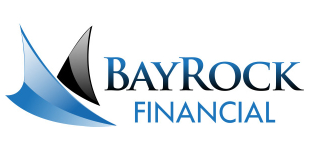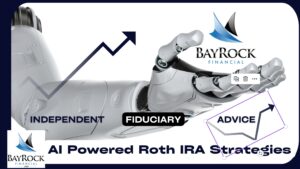Leveraged and Inverse ETFs
Specialized Products with Extra Risks for Buy-and-Hold Investors

-
The SEC staff and FINRA issued this Alert in 2009 because they believe individual investors may be confused about the performance objectives of leveraged and inverse exchange-traded funds (ETFs).
-
Leveraged and inverse ETFs typically are designed to achieve their stated performance objectives on a daily basis.
-
Some investors might invest in these ETFs with the expectation that the ETFs may meet their stated daily performance objectives over the long term as well.
-
Investors should be aware that performance of these ETFs over a period longer than one day can differ significantly from their stated daily performance objectives.
What Are Exchange-Traded Funds?
ETFs are typically registered investment companies whose shares represent an interest in a portfolio of securities that track an underlying benchmark or index. (Some ETFs that invest in commodities, currencies, or commodity- or currency-based instruments are not registered as investment companies.)
Before Investing – Click Here and Get Your Risk Number

Unlike traditional mutual funds, shares of ETFs typically trade throughout the day on a securities exchange at prices established by the market.
-
ETFs have evolved over the years, becoming more complex.
-
Investors considering ETFs should evaluate each investment closely and not assume all ETFs are alike.
-
In the last few years, a number of leveraged and inverse ETFs have been introduced to the market that are very different from the traditional variety of ETFs.
## What are Leveraged and Inverse ETFs?
Leveraged ETFs seek to deliver multiples of the performance of the index or benchmark they track. Inverse ETFs (also called “short” funds) seek to deliver the opposite of the performance of the index or benchmark they track. Like traditional ETFs, some leveraged and inverse ETFs track broad indices, some are sector-specific, and others are linked to commodities, currencies, or some other benchmark. Inverse ETFs often are marketed as a way for investors to profit from, or at least hedge their exposure to, downward moving markets.
Leveraged inverse ETFs (also known as “ultra short” funds) seek to achieve a return that is a multiple of the inverse performance of the underlying index. An inverse ETF that tracks a particular index, for example, seeks to deliver the inverse of the performance of that index, while a 2x (two times) leveraged inverse ETF seeks to deliver double the opposite of that index’s performance. To accomplish their objectives, leveraged and inverse ETFs pursue a range of investment strategies through the use of swaps, futures contracts, and other derivative instruments.
Most leveraged and inverse ETFs “reset” daily, meaning that they are designed to achieve their stated objectives on a daily basis. Their performance over longer periods of time — over weeks or months or years — can differ significantly from the performance (or inverse of the performance) of their underlying index or benchmark during the same period of time. This effect can be magnified in volatile markets. As the examples below demonstrate, an ETF that is set up to deliver twice the performance of a benchmark from the close of trading on Day 1 to the close of trading on Day 2 will not necessarily achieve that goal over weeks, months, or years.
Real-Life Examples
The following two real-life examples illustrate how returns on a leveraged or inverse ETF over longer periods can differ significantly from the performance (or inverse of the performance) of their underlying index or benchmark during the same period of time.
-
Between December 1, 2008, and April 30, 2009, a particular index gained 2 percent. However, a leveraged ETF seeking to deliver twice that index’s daily return fell by 6 percent—and an inverse ETF seeking to deliver twice the inverse of the index’s daily return fell by 25 percent.
-
During that same period, an ETF seeking to deliver three times the daily return of a different index fell 53 percent, while the underlying index actually gained around 8 percent. An ETF seeking to deliver three times the inverse of the index’s daily return declined by 90 percent over the same period.
How can this apparent breakdown between longer term index returns and ETF returns happen? Here’s a hypothetical example: let’s say that on Day 1, an index starts with a value of 100 and a leveraged ETF that seeks to double the return of the index starts at $100. If the index drops by 10 points on Day 1, it has a 10 percent loss and a resulting value of 90. Assuming it achieved its stated objective, the leveraged ETF would therefore drop 20 percent on that day and have an ending value of $80. On Day 2, if the index rises 10 percent, the index value increases to 99. For the ETF, its value for Day 2 would rise by 20 percent, which means the ETF would have a value of $96. On both days, the leveraged ETF did exactly what it was supposed to do – it produced daily returns that were two times the daily index returns. But let’s look at the results over the 2 day period: the index lost 1 percent (it fell from 100 to 99) while the 2x leveraged ETF lost 4 percent (it fell from $100 to $96). That means that over the two day period, the ETF’s negative returns were 4 times as much as the two-day return of the index instead of 2 times the return.
Things to Consider Before Investing
The best form of investor protection is to clearly understand leveraged or inverse ETFs before investing in them. No matter how you initially hear about them, it’s important to read the prospectus, which provides detailed information related to the ETFs’ investment objectives, principal investment strategies, risks, and costs. The SEC’s EDGAR system, as well as search engines, can help you locate a specific ETF prospectus. You can also find the prospectuses on the websites of the financial firms that issue a given ETF, as well as through your broker.
You should also consider seeking the advice of an investment professional. Be sure to work with someone who understands your investment objectives and tolerance for risk. Your investment professional should understand these complex products, be able to explain whether or how they fit with your objectives, and be willing to monitor your investment. Before investing in these instruments, ask:
-
How does the ETF achieve its stated objectives? And what are the risks? Ask about—and be sure you understand—the techniques the ETF uses to achieve its goals. For example, engaging in short sales and using swaps, futures contracts, and other derivatives can expose the ETF—and by extension ETF investors—to a host of risks.
-
What happens if I hold longer than one trading day? While there may be trading and hedging strategies that justify holding these investments longer than a day, buy-and-hold investors with an intermediate or long-term time horizon should carefully consider whether these ETFs are appropriate for their portfolio. As discussed above, because leveraged and inverse ETFs reset each day, their performance can quickly diverge from the performance of the underlying index or benchmark. In other words, it is possible that you could suffer significant losses even if the long-term performance of the index showed a gain.
-
Is there a risk that an ETF will not meet its stated daily objective? There is always a risk that not every leveraged or inverse ETF will meet its stated objective on any given trading day. Be sure you understand the impact an investment in the ETF could have on the performance of your portfolio, taking into consideration your goals and your tolerance for risk.
-
What are the costs? Leveraged or inverse ETFs may be more costly than traditional ETFs. Use FINRA’s Fund Analyzer to estimate the impact of fees and expenses on your investment. The SEC’s Mutual Fund Cost Calculator can also help you estimate and compare costs of owning mutual funds.
-
What are the tax consequences? Leveraged or inverse ETFs may be less tax-efficient than traditional ETFs, in part because daily resets can cause the ETF to realize significant short-term capital gains that may not be offset by a loss. Be sure to check with your tax advisor about the consequences of investing in a leveraged or inverse ETF.
As with all investments, it pays to do your own homework. Only invest if you are confident the product can help you meet your investment objectives and you are knowledgeable and comfortable with the risks associated with these specialized ETFs.
Exchange-Traded Funds (ETFs)
This summary discusses only ETFs that are registered as open-end investment companies or unit investment trusts under the Investment Company Act of 1940 (the “1940 Act”). It does not address other types of exchange-traded products that are not registered under the 1940 Act, such as exchange-traded commodity funds or exchange-traded notes.
The following information is general in nature and is not intended to address the specifics of your financial situation. When considering an investment, make sure you understand the particular investment product fully before making an investment decision.
-
What is an ETF?
-
Things to Consider before Investing in ETFs
-
Types of ETFs
-
Final Words
-
Additional Information
What is an ETF?
ETFs are a type of exchange-traded investment product that must register with the SEC under the 1940 Act as either an open-end investment company (generally known as “funds”) or a unit investment trust.
Like mutual funds, ETFs offer investors a way to pool their money in a fund that makes investments in stocks, bonds, or other assets and, in return, to receive an interest in that investment pool. Unlike mutual funds, however, ETF shares are traded on a national stock exchange and at market prices that may or may not be the same as the net asset value (“NAV”) of the shares, that is, the value of the ETF’s assets minus its liabilities divided by the number of shares outstanding.
Things to Consider before Investing in ETFs
ETFs are not mutual funds. Generally, ETFs combine features of a mutual fund, which can be purchased or redeemed at the end of each trading day at its NAV per share, with the intraday trading feature of a closed-end fund, whose shares trade throughout the trading day at market prices.
Unlike with mutual fund shares, retail investors can only purchase and sell ETF shares in market transactions. That is, unlike mutual funds, ETFs do not sell individual shares directly to, or redeem their individual shares directly from, retail investors. Instead, ETF sponsors enter into contractual relationships with one or more financial institutions known as “Authorized Participants.” Authorized Participants typically are large broker-dealers. Only Authorized Participants are permitted to purchase and redeem shares directly from the ETF, and they can do so only in large aggregations or blocks (e.g., 50,000 ETF shares) commonly called “Creation Units.”
Other investors purchase and sell ETF shares in market transactions at market prices. An ETF’s market price typically will be more or less than the fund’s NAV per share. This is because the ETF’s market price fluctuates during the trading day as a result of a variety of factors, including the underlying prices of the ETF’s assets and the demand for the ETF, while the ETF’s NAV is the value of the ETF’s assets minus its liabilities, as calculated by the ETF at the end of each business day.
Types of ETFs
Index-Based ETFs
Most ETFs trading in the marketplace are index-based ETFs. These ETFs seek to track a securities index like the S&P 500 stock index and generally invest primarily in the component securities of the index. For example, the SPDR, or “spider” ETF, which seeks to track the S&P 500 stock index, invests in most or all of the equity securities contained in the S&P 500 stock index. Some, but not all, ETFs may post their holdings on their websites on a daily basis.
Actively Managed ETFs
Actively managed ETFs are not based on an index. Instead, they seek to achieve a stated investment objective by investing in a portfolio of stocks, bonds, and other assets. Unlike with an index-based ETF, an adviser of an actively managed ETF may actively buy or sell components in the portfolio on a daily basis without regard to conformity with an index.
Before You Invest
Before investing in an ETF, you should read both its summary prospectus and its full prospectus, which provide detailed information on the ETF’s investment objective, principal investment strategies, risks, costs, and historical performance (if any). The SEC’s EDGAR system, as well as Internet search engines, can help you locate a specific ETF prospectus. You can also find prospectuses on the websites of the financial firms that sponsor a particular ETF, as well as through your broker.
Do not invest in something that you do not understand. If you cannot explain the investment opportunity in a few words and in an understandable way, you may need to reconsider the potential investment.
Finally, you may wish to consider seeking the advice of an investment professional. If you do, be sure to work with someone who understands your investment objectives and tolerance for risk. Your investment professional should understand complex products and be able to explain to your satisfaction whether or how they fit with your objectives.
More Information from SEC and Finra:
Investor Bulletin: Exchange-Traded Funds (ETFs) SEC-FINRA Investor Alert on Leveraged and Inverse ETFs SEC Fast Answers, Exchange-Traded Funds Mutual Funds and ETFs – A Guide for Investors Investor Bulletin: Index Funds [Investor Bulletin: Smart Beta, Quant Funds and other Non-Traditional Index Funds](
The products discussed below are complex and subject to significant risks and are not suitable for many investors. Please read the prospectus carefully before making your final investment decision.
Inverse ETFs attempt to deliver returns that are the opposite of the underlying index’s returns. Typically, the longer you hold a leveraged or inverse ETF, the greater your potential loss. Accordingly, leveraged and inverse ETFs may not be suitable for investors who plan to hold positions for longer than one trading session.
Leveraged ETFs are designed to achieve their investment objective on a daily basis meaning that they are not designed to track the underlying index over an extended period of time. Leverage can increase volatility.
Check out the Exchange-Traded Funds and Exchange-Traded Notes sections of the Disclosure Library to learn more about those topics.
Additional regulatory information about these products:
Leveraged and Inverse ETFs: Specialized Products with Extra Risks for Buy-and-Hold Investors
The Lowdown on Leveraged and Inverse Exchange-Traded Products
Know Before You Invest: Volatility-Linked Exchange-Traded Products




